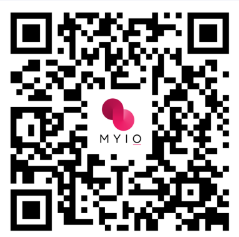
Depression is a complex and often debilitating condition that affects millions of people worldwide. While therapy and medication work well for many, some individuals find their symptoms persist despite trying multiple treatments. This is where Transcranial Magnetic Stimulation (TMS) offers a promising, non-invasive alternative. But how does it work, and how effective is it? Let’s explore how TMS can provide relief from depression.
What is TMS and How Does It Work?
Transcranial Magnetic Stimulation (TMS) is an FDA-approved therapy that uses magnetic fields to stimulate specific areas of the brain. It is primarily used to treat Major Depressive Disorder (MDD) in individuals who haven’t responded to traditional treatments like antidepressants or therapy.
TMS targets the prefrontal cortex, the area of the brain involved in mood regulation. By sending magnetic pulses to this region, TMS stimulates neural activity, effectively “waking up” parts of the brain that are underactive in people with depression.
The Science Behind TMS
Brain Activity and Depression
Depression is often associated with imbalances in brain activity, particularly in the left prefrontal cortex, which tends to be underactive. Traditional antidepressants aim to rebalance neurotransmitters like serotonin and dopamine, but they don’t always address localized brain activity issues.
TMS bridges this gap by directly stimulating neurons in the prefrontal cortex, improving connectivity and communication between brain regions. Over time, this leads to long-lasting improvements in mood and emotional regulation.
Non-Invasive and Painless
Unlike more invasive procedures such as Electroconvulsive Therapy (ECT), TMS does not require anesthesia or cause significant side effects. Patients remain awake and alert during the session, which typically lasts 20–40 minutes.
Benefits of TMS for Depression
TMS offers several advantages, making it a highly appealing option for those seeking relief from depression:
Effective for Treatment-Resistant Depression
Studies show that TMS can be life-changing for individuals who haven’t responded to other treatments. Approximately 50-60% of people with treatment-resistant depression experience significant improvement with TMS, with many achieving remission.
Non-Systemic Treatment
Unlike medications, which circulate through the body and can cause unwanted side effects (e.g., weight gain, fatigue, or sexual dysfunction), TMS is a localized treatment. It directly targets the brain, minimizing systemic side effects.
No Downtime
Patients can resume their daily activities immediately after a TMS session. There’s no need for recovery time, making it a convenient option for those with busy schedules.
Long-lasting Results
TMS promotes neuroplasticity, or the brain’s ability to rewire itself. This means that the benefits of treatment can extend well beyond the therapy sessions, offering lasting relief for many patients.
What to Expect During TMS Therapy
If you’re considering TMS, here’s what a typical treatment journey looks like:
Initial Consultation
A psychiatrist or neurologist will assess your medical history, current symptoms, and previous treatments to determine if TMS is right for you.
Treatment Sessions
TMS therapy involves a series of sessions, usually five days a week for 4–6 weeks. During each session:
- A magnetic coil is placed near your scalp, targeting the prefrontal cortex.
- Magnetic pulses are delivered, which feel like gentle tapping.
- You’ll remain seated, awake, and comfortable throughout the process.
Minimal Side Effects
Common side effects include mild headaches or scalp discomfort, which typically subside after a few sessions. Serious side effects are rare.
Who is TMS Suitable For?
TMS is ideal for individuals with:
- Treatment-Resistant Depression: Those who have tried at least two antidepressants without success.
- Intolerance to Medication: Those who cannot take antidepressants due to side effects.
- Chronic Depression: Long-term depression that has persisted despite therapy and lifestyle changes.
However, TMS may not be suitable for individuals with:
- A history of seizures or epilepsy.
- Metal implants in or near the head.
How Effective is TMS?
TMS has demonstrated significant success in clinical trials and real-world applications. Research indicates that approximately 30-40% of patients achieve complete remission, while many others experience noticeable symptom reduction. Regular maintenance sessions can further enhance its effectiveness.
TMS vs. Other Depression Treatments
| Treatment
|
Invasiveness
|
Time to See Results
|
Side Effects
|
Effectiveness
|
| TMS | Non-invasive | 2–4 weeks | Mild (e.g., headaches) | 50-60% improvement for TRD |
| Antidepressants | Non-invasive | 4–6 weeks | Systemic (e.g., nausea) | Effective for 60-70% of cases |
| ECT | Invasive | Immediate | Memory loss, confusion | Highly effective for severe cases |
Conclusion
Transcranial Magnetic Stimulation (TMS) is a revolutionary treatment that offers hope to those struggling with depression, particularly when other therapies have failed. Its non-invasive nature, minimal side effects, and proven effectiveness make it an excellent option for many.
If you or someone you love is battling depression and seeking alternatives, consider consulting a healthcare professional about TMS. Relief may be closer than you think.


